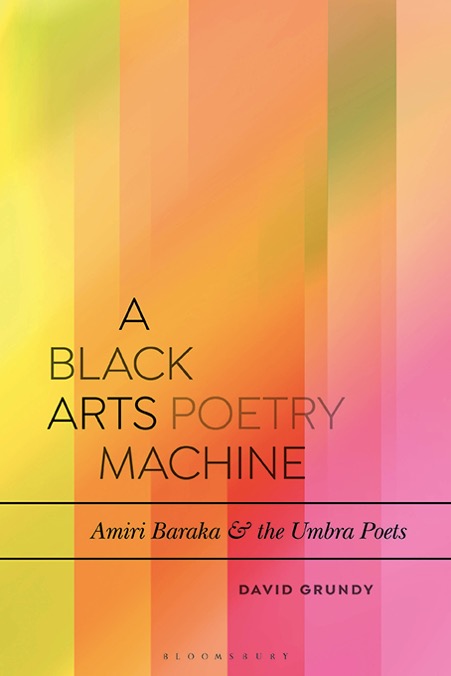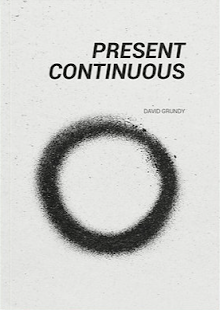
Listening to Ornette Coleman’s classic 1959 album ‘The Shape of Jazz to Come’ again recently made me think: what was the ‘jazz to come’ that Coleman anticipated? Did it live up to his expectations, fulfilling the promise of the early development of the music and what many see as its heyday in the 50s and 60s? (For instance, see Gary Giddins’ list of 40 great musicians under 40 who were active in 1960, in his introduction to 'Visions of Jazz'). Or has jazz died, as so many predicted, with the popularity of simpler forms of entertainment, now nowhere near the language of young blacks, and young whites, replaced by hip-hop, rock and pop? Has it been killed by commercial pressures that have forced artists into musical compromises in order to gain popularity that have lead to the spread of styles of jazz that come nowhere near fulfilling the promise of the medium? And are the true voices of jazz, those with the most exciting and innovative things to say, being forced underground, appreciated only by a minority? My opinionated slant is probably already becoming clear in this list of rhetorical questions, but if you want to know more, then read on…
Jazz at heart, and at its best, is a rebellious art from, which is suitable considering that it’s the great musical heritage of America, a nation founded in a spirit of revolutionary fervour and idealism. And despite the fact that the nation seems to have largely lost its connection to that past, jazz still burns with a flame of passion and invention and spontaneous joy. A genre that celebrates both the individual, in solos which can turn, in the case of someone like John Coltrane, into minute-stretching marathons, yet at the same time embodies communal, shared values, in the interaction of rhythm section and soloist, or the chaotic looseness of free jazz improvisation.
Its watering-down in recent years has led to a widespread misconception of what the genre actually stands for. Revisionists like Wynton Marsalis, the neo-cons of jazz, seem to think that they can create a vibrant and living new music simply by re-treading the post-bop language of the past, a language that was new and exciting in its time (and remains so in the original recordings of the practitioners from its heyday), but loses its power and ideological force when it is endlessly rehashed in an age it no longer seems to suit.

What people like the Marsalis brothers seem to forget, and what is so vital, is that jazz is an ever-changing art, unconstrained by shallow categorisations, by being divided into boxes, or being proclaimed ‘dead’ every two seconds. Like the title of Herbie Hancock’s famous composition, it’s a Chameleon amongst the vapid commercialism of pop, the posturing of rock, and the morally iffy vision of much modern rap. These other forms may all, in their own way, claim to represent the voices of rebellion, youth, anti-establishment action: witness the Live Aid and Live 8 concerts, Woodstock in the 60s, the political stance of Bruce Springsteen and Neil Young – and, indeed, nowadays, virtually every musical act seems to be jumping on the anti-Bush, anti-war bandwagon, whether or not they have anything particularly profound to say about it.
But jazz is the only genre to actually implement this; refusing to be bound by stereotypes, a decline in publicity, or commercial pressures, it lives on creating emotions and subverting expectations and stirring the soul. Archie Shepp’s Ben Webster-spawned avant-garde tenor growls moved from gruff lyricism to yells of rage; at his best, he evoked a furious, trembling fervour, a sense of outrage and fierce pride that speaks volumes more than the stadium-pleasing would-be heroic sound of modern-day U2, fronted by Saint Bono, or the awful spectacle of Emo (rebellion, ’cos it’s cool…) Even Hendrix, the voice of 60s hippie idealism and counter-cultural rebellion, learnt his lessons from John Coltrane.
The previously insatiable progress of jazz has slowed somewhat recently, with the initially promising behemoth of fusion probably to blame, having moved from a merging of rock energy and jazz invention to a sickly, smooth brand of pop with a few stylistic smatterings from jazz to add a touch of ‘class.’ However, there is hope for the future, if the new generation of jazz musicians learn the lessons of masters like Wayne Shorter, still at the top of his game, as he proved on a visit to London with his quartet back in November, or the spiky, uncompromising blend of tradition and tangy modernism of octogenarian Stan Tracey, who played on the same bill as Shorter, or free-jazz innovator Ornette Coleman, still inventing afresh, now working with a three-bass group that plays some old compositions, yet re-interprets them in a completely fresh, startling and beautiful way.

I suspect that, if jazz is to have a future, it won’t come from the legions of highly skilled young musicians able to play in the boppish style rooted somewhere between Charlie Parker and 60s Blue Note, that seems to be regarded as ‘the jazz language’ nowadays. Good as they are, endless versions of ‘Body and Soul’ or ‘So What’ are never going to rise above the merely competent unless a really original take can be found on them. It’s easy to forget that jazz standards were often drawn from the popular music of the day – film tunes, show tunes, whatever. Good, suitable material is maybe thinner on the ground nowadays, though there are exceptions - Brad Mehldau’s take on Radiohead or trumpeter Dave Douglas’ performance of Bjork material, for instance, and, in a concept with less mileage, the Bad Plus’ anarchic takes on everything from Nirvana to the Chariots of Fire theme to Black Sabbath.
Nevertheless, whatever excuses you come up with, jazz is in danger of being seen as rather an old-fashioned, middle-class music; the domain of beer-swilling old men with beards and sandals at summer jazz festivals, or yuppies in trendy wine-bars who don’t give a shit about the music they’re listening to except as ‘sophisticated’ background noise. Or worse, the stereotype presented on the BBC’s ‘Fast Show’, where it’s presented as an exclusive social club, full of pretentious musician’s jargon and absurd slang (“nice…”). There are plenty of groups and artists with potential, like Acoustic Ladyland, the double-sax fronted band trying to appeal to a younger fan base through their simple, repetitive, rock-based songs, or the surprisingly popular Swedish piano trio EST (Esbjorn Svensson trio), who fuse Keith Jarrett-influenced piano with electronica-tinged grooves and a distorted, guitar-like bass sound that builds up an almost Hendrixian storm. However, they don’t’ seem to have really developed beyond the initial, promising concept – it’s as if they figure that audiences like it, so they’ll churn out more of the same. If Acoustic Ladyland incorporate some more complex improvisation and write more interesting material, they could have a future, but EST have been doing the same thing album after album now, and it’s getting formulaic.
[And don't get me started on the 'New Jazz generation' ("refining the past and defining the future"), as a CD compilation so lovingly described a group of artists like Jamie Cullum, Katie Melua (please!) and Amy Winehouse. If that's where jazz is going, show me the exit and I'll lock myself away with my Miles Davis collection - at least then I'll hear something that sounds modern, innovative and relevant!]

As Stan Tracey commented in a recent interview for Radio 3’s now-defunct ‘Jazz Legends’, there are plenty of people in the UK scene today with excellent technique, but they lack something the great masters have, that ability to hit you right between the eyes, in a few bars, with something that could be complex, or could be incredibly simple, but makes you catch your breath. I’d expand that by saying that a lot of the new music that’s coming out lacks a real emotional undercurrent – Polar Bear’s ‘Held on the Tips of Fingers’ is a good example. The same could be said to apply to the US scene as well.
Now, going back to my original point, the future of jazz is more likely to come from the vibrant underground scene in Europe and America, frequented by the not-so-young but still incendiary likes of Tim Berne and John Zonr, or eccentris like instrument inventor, bassist, pianist, vocalist and composer Cooper Moore. As shown on an edition of the Radio 3 programme 'Jazz on 3' from the start of the year, which analysed the state of New York broadcast on Radio 3, acts like Joe Lovano may headline at the Village Vanguard, but the real hot shit is going down in John Zorn's club, or in a church where Oliver Lake, Reggie Workman and Andrew Cyrille ('Trio 3') are giving listeners what the DVD of Miles' Davis 1970 Isle of Wight festival performance so delicately describes as "a spiritual orgasm."

But without funding and public notice, such intense creativity and experimentation is unlikely to remain more than a minority interest, slavishly followed by those in the know, through internet blogs (like http://destination-out.com) and underground clubs, and ignored by everyone else, who'd rather hear Jamie Cullum spurt out 'Fly me to the Moon' than listen to an hour-long set by Ken Vandermark or Marc Ribot. Sad to say, in this commercialist and relentlessly shallow age, anything approaching real innovation or complexity is likely to be ignord in favour of he easy pleasure that doesn't make your work for your musical highs. If jazz is not be an art that has a splurge of creativity in the first half of the century, then collapsed into an endless rehash of yesterday's new thing, something has to happen, and soon. We desperately need another Louis Armstrong, or Duke Ellington, or Charles Mingus, or Miles Davis, or John Coltrane, or Charlie Parker - a jazz saviour to redeem us from the musical slough of despond we find ourselves in, a repeat of what Keith Shadwick (writing about the Beat Generation) calls "those intoxicating post-war years, when it seemed that mesisahs really could emerge from the dark recesses of night clubs and blow everyone away with their messages, and that Young America would be out there, listening to every diamond-hard note." Whoever you are, please hurry up!
(*) In his introduction to 'Visions of Jazz', Gary Giddins foresees a fate for jazz similar to that which has overtaken classical music - a form which was once "a vital, transfiguring, seductive and galling art, often improvised, that spoke to people's lives and kept them on their toes [and] was also popular", before "the institutions took over and restored it into a malleable craft and fixed repertory...for the amusement of the upper middle class shopper out on a cultural excursion, the fat-cat subscriber whose seasonal boxes entertain family and friends, and children who eat their spinach." His question - "Is this the future of jazz? - a repertory dominated by the trustees of diletantes, a morbid obsession with the saintly dead, a horror of innovation?" is incredibly pertinent.




No comments:
Post a Comment